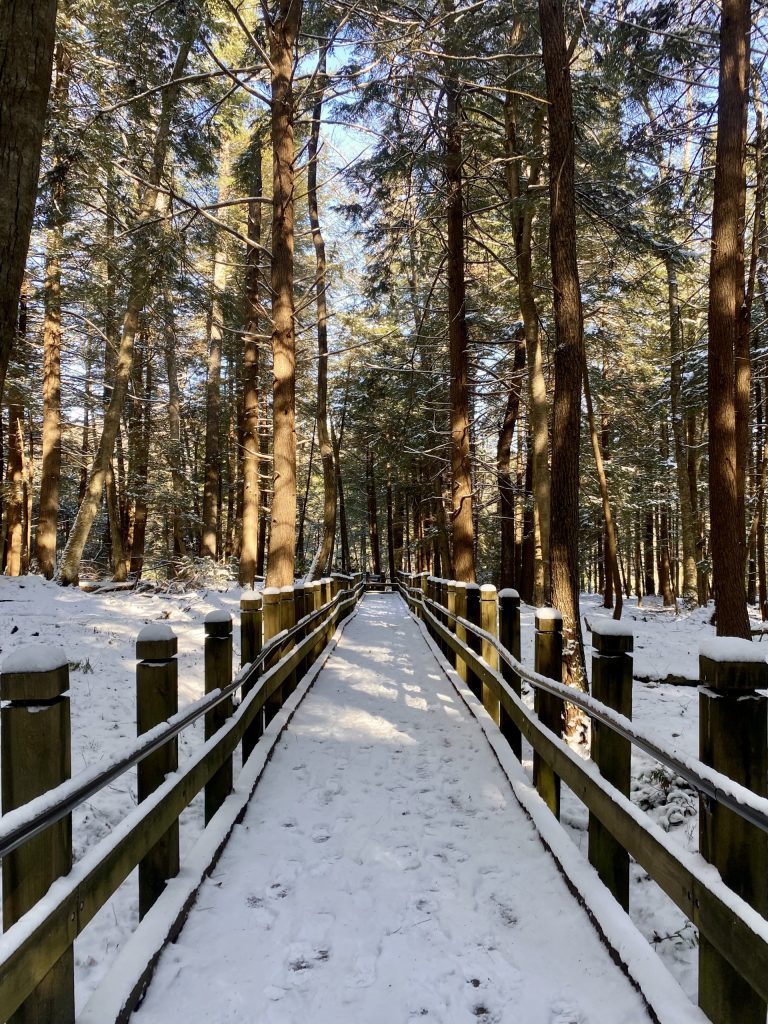Exploring Garrett County's Prehistoric Times
Garrett County, Maryland, is renowned for its modern attractions, notably Deep Creek Lake, drawing thousands of visitors each year. Yet, nestled not far from this hub of contemporary leisure lies a realm of ancient wonders dating back centuries and millennia. Journey with us as we step back into Garrett County’s prehistory, exploring its virgin forests, cascading waterfalls, and mysterious swamps that have stood the test of time.
A Glimpse into the Past In the heart of Garrett County lies Swallow Falls State Park, home to the last known virgin forest in Maryland. Amidst the roaring waterfalls and cool waters that draw visitors’ attention, this forest stands quietly, largely unnoticed. Stretching across 40 acres, this patch of white pine and hemlock boasts trees over 300 years old, some with trunks reaching 40 inches in thickness. Tales from early travelers speak of towering pines, their lowest branches a staggering 100 feet from the ground.
A Testament to Stewardship Despite the encroachment of development and the lure of commercial lumbering, these ancient sentinels were spared from the axe. Henry Krug, the land’s owner, recognized their significance and resisted the offers of developers. His dedication to preservation ensured that, in 1940, the property was deeded to the Masonic Grand Lodges of Pennsylvania and West Virginia, ultimately passing into the hands of the State of Maryland. Today, this forest stands as a testament to the power of stewardship, preserved for future generations to marvel at.
Nature’s Majestic Display Adjacent to the virgin forest lies Muddy Creek Falls, Maryland’s highest free-falling waterfall. Its source, the Cranesville Pine Swamp, adds to the area’s mystique. Formed over ten thousand years ago by glacial action, this boreal bog has remained remarkably unchanged. Despite millennia passing, its moist conditions and unique geography have preserved a prehistoric landscape, offering a glimpse into a bygone era.
A Window to the Past Within the Cranesville Pine Swamp, scientists have unearthed relics of ancient flora and fauna, dating back to 7,500 B.C. This rare ecosystem hosts a diverse array of plant and animal life, including sphagnum moss, black bears, and snowshoe hares. Artists and naturalists alike have been captivated by its mist-shrouded beauty, evoking a sense of stepping into a primordial world.
Conservation Efforts and National Recognition Recognizing the importance of preserving this unique habitat, The Nature Conservancy began purchasing swamp property in 1960, eventually totaling 1,600 acres. In 1964, Cranesville Swamp was designated one of the first national natural landmarks in the United States, a testament to its ecological significance. Today, Maryland boasts six such landmarks, each a beacon of conservation and natural beauty.

Posted on 03/11/2024 in Uncategorized # dcl, deep creek, deep creek lake, garrett, garrett county, maryland, mountain, mountain maryland, mountains, western maryland









